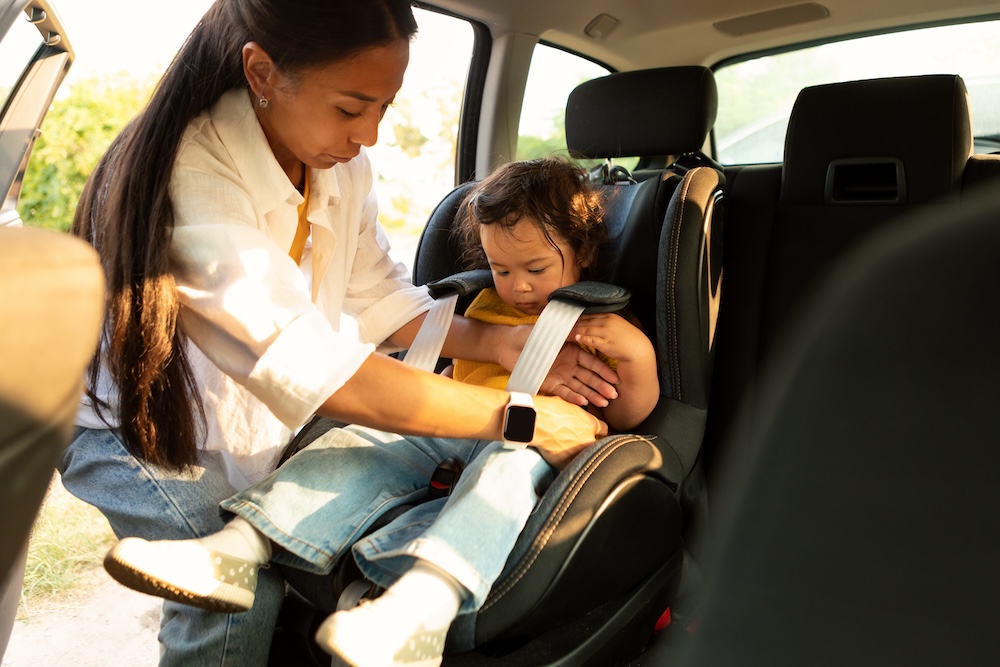Using car seats properly is extremely important for protecting children while riding in a vehicle. Car seats can protect children from being injured or killed during a car crash. But finding the best car seat to use and learning how to install it properly can be overwhelming as a parent. In this blog, we break it down to make it easier and to ensure that you have all of the information you need for car seat safety.
When it comes to choosing the right car seat, you’ll want to take into account your child’s age, size, and developmental needs. Car seat manuals will provide recommendations based on these factors so it’s important to read them thoroughly. The manuals will also provide step-by-step guidelines on how to install the car seat. But if you have any trouble or doubts, it’s best to work with a professional who can install the seat for you. For a list of car seat products based on your child’s height and weight, click here.
Car seats should be installed in the back of the vehicle. Older children should also sit in the back until they’re 13 years of age. When you install the seat, you can use the vehicle’s seat belt or its LATCH (attachment system for car safety seats). Forward-facing car seats will have a top tether which should be securely attached to the top anchor. The lower anchor connectors should be fastened to the lower anchors. If you’re using the seat belt instead of the LATCH system, it’s important to make sure that the seat belt is locked securely to hold the seat tightly. If you’re able to move the seat at the belt path more than an inch in either direction, the seat is not tight enough. When using a rear-facing car seat, place the harnesses in slots that are at or below your child’s shoulders.
Many rear-facing car seats will also have load legs and anti-rebound bars to help absorb the energy of a crash and protect your child from being injured. For children with disabilities who are not able to keep their head and neck straight, they will benefit from the recline feature on forward-facing convertible, all-in-one, and combination seats. The feature can keep your child’s head from drooping forward.
When newborn babies first arrive home from the hospital, it is recommended by the American Academy of Pediatrics to use a rear-facing car seat and to continue using one until your child reaches the highest weight and height permitted by their car safety seat manufacturer. After that, children should continue to ride rear facing in a convertible or all-in-one seat until they outgrow rear-facing seats but no earlier than 2 years of age. They can then start to use forward-facing seats until they’re ready to use booster seats, typically after 7 years of age. Older children should remain in the booster seat until they’re big enough to fit in a seat belt properly, usually after 12 years of age.
Before installing a booster seat, read through the instructions and the safety manual. The lap belt should lie low and snug across children’s upper thighs and the shoulder belt should cross over the middle of children’s chests and the shoulders.
When using car or booster seats during the winter, it’s important to remove any coat or jacket off your child. Children should be tightly strapped in and bulky coats create space between the child and the belt. If an accident occurs, the child will be in danger of slipping out of their car or booster seat. To keep your child warm, you can put a blanket over them and use your car’s heating system. When you’re cleaning the car or booster seat, read the manufacturer’s guidelines first and avoid using disinfectants as they can decrease the protection of the seat.
As a reminder, if you have any trouble installing a car or booster seat or doubts about their security, seek guidance from a certified child passenger safety technician. You can find one on this website.




